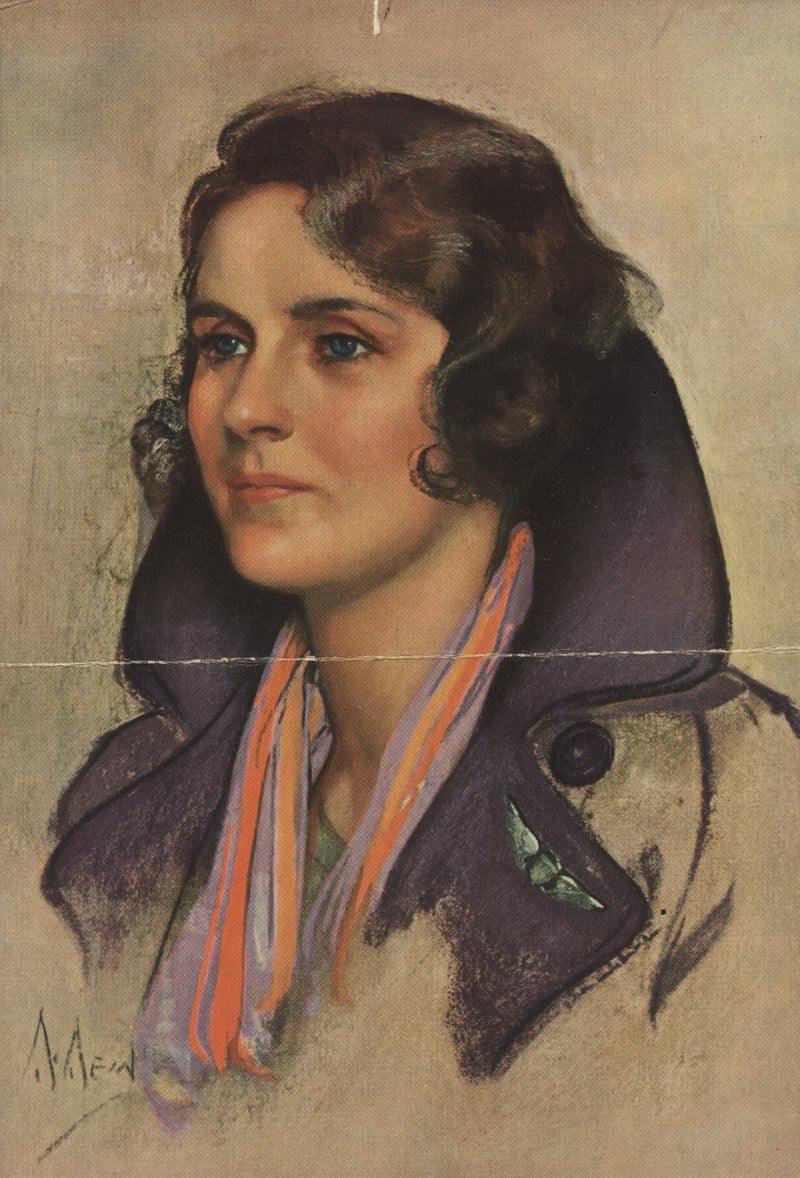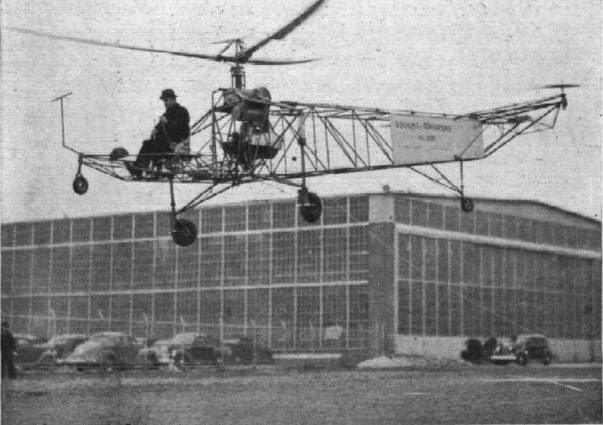Amy, Wonderful Amy
I have always been fascinated by airplanes, and on February 25, 1961, I took my first flight in an Aeronca 7AC (N2778E) in San Angelo, Texas.
That flight was the culmination of my dream of flying, which occurred when I first saw a V-Taill Beech Bonanza at the Monroe County Fair in 1959.
On May 31, 1961, I passed my Private Pilot Flight Test at the Fort Worth airport in a Cessna 172 (N7472X).
My dream had come true.
Now, some 62 years later, I still fly and remain fascinated by all things aviation.
By the 1960s, when I learned to fly and became a Certified Flight Instructor, not many women wanted to be pilots.
But, in the early days of aviation, there were quite a few women pilots.
The following story is about one of them, a young woman by the name of Amy Johnson.
AmyJohnson
Amy Johnson was born on July 1st, 1903, the eldest of three sisters, in Kingston upon Hull, East Riding of Yorkshire.
Apparently quite gifted, she graduated from Kingston High School, followed by graduation with a Bachelor of Arts degree in economics from the University of Sheffield.
After graduation, Amy worked as a secretary to a London solicitor (attorney).
Soon she was introduced to flying as a hobby and received encouragement and support from her father.
She gained her aviator's certificate number 8662 on January 28, 1929, followed by a pilot's "A" license number 1979 on July 6, 1929. In that same year, she became the first British woman to obtain a ground engineer's "C" license (Aircraft Mechanics License).
With strong support from her father, who provided the money for her first airplane, she purchased a used de Havilland DH.60 Gipsy Moth, registration number G-AAAH. She named her airplane Jason after her father's trademark.

Amy standing next to her used Gipsy Moth named "Jason," the airplane she would fly from England to Australia in 1930, an 11,000-mile trip.
Jason was a two-seat touring and training aircraft manufactured by the de Havilland Aircraft Company in England.
Gipsy Moth Specifications:
- Powerplant: 100hp
- Wingspan: 30 feet 0 Inches
- Gross Weight: 1,650 lbs
- Seats: Two - Pilot and one Passenger
- Maximum Speed: 102 mph
- Crusie Speed: 85 mph
- Range: 320 miles
London to Darwin Australia
In 1930 Amy Johnson gained worldwide recognition when she became the first woman to fly solo from England to Australia.
The flight from the Croydon Airport in Surrey, England, began on May 5th, 1930, and concluded when she landed at Darwin Northern Territory in Australia on May 24th, 1930.
For her achievement, Amy received the Harmon Trophy, as well as a CBE in King GeorgeV's 1930 Birthday Honors recognition of achievements. She also was honored with pilot's license No. 1 under Australia's 1921 Air Navigation Regulations.
(Note: The CBE is recognitions as a "Commander of the Most Excellent Order of the British Empire.")
Amy, Wonderful Amy
Amy's achievement of flying solo from London to Darwin captured the imagination of the British public.
As a result, a song titled "Amy, Wonderful Amy, was written to celebrate her achievement.
Here is the song:
But, Amy Johnson was not finished setting records.
Next, Amy replaced her original "Jason" with a de Havilland DH80 Puss Moth, G-AAZV, which she named "Jason II."
In July 1931, she and her co-pilot, Jack Humphreys, became the first people to fly from London to Moscow in one day, completing a flight of 1,760 miles in approximately 21 hours.
They continued their flight, flying from Moscow to Siberia and then on to Tokyo, setting a record time from Britain to Japan.
True Love
This part I can identify with because I met my wife when I taught her to fly. I remain her co-pilot to this day.
Eight hours after she and Jim Mollison, a Scottish pilot, met, they departed on a flight during which he proposed marriage.
Mollison obtained his Royal Air Force (RAF) Short Service Commission at 18 and was the youngest officer in the service. Upon completion of training, he was posted to India, flying on active service in Waziristan.
In July of 1932, Amy broke her new husband's solo record for flying from London to Cape Town, South Africa, in a Puss Moth G-ACAB named "Desert Cloud."
Seeking More World Records
It's July 1933, and Amy, with her husband Jim Millison, flew G-ACCV, named "Seafarer," a de Havilland DH.84 Dragon, and attempted a non-stop flight from Wales in SW England to Floyd Bennett Field in Brooklyn, New York.
They intended to set a world record flight distance by flying from New York to Baghdad.
However, as they approached the East Coast of the United States, they began to run low on fuel. It was now dark and nighttime, and when they spotted the lights of Bridgeport Municipal Airport in Stratford, CT, they circled the airport some five times before crashing in a drainage ditch some distance from the airport.
Both pilots were thrown from the aircraft but suffered only minor cuts and gashes.
After they recovered from their injuries, they were feted by a ticker tape parade down Wall Street in New York City.
The Millisons continued their quest for world records, like flying from Britain to India in record time in 1934.
On May 4th, 1936, Johnson made her last record-breaking flight flying from Gravesend Airport to South Africa in a Percival Gull Six (G-ADZO). The same year she was awarded the Gold Medal of the Royal Aero Club.
The Second World War
During the Second World War, Johnson joined the ATA (Air Transport Auxiliary), ferrying military aircraft around England.
She achieved the rank of First Officer in the ATA and later on wrote a humorous article about a typical day in the life of an ATA pilot.
On January 5, 1941, while ferrying an Airspeed Oxford from Prestwick, Johnson got lost in bad weather and ran out of fuel over the Thames Estuary near Herne Bay.
Disappearance
There was a convoy in the Estuary at that time, and Johnson's parachute was seen descending into the water when she began calling out for help.
The Captain of HMS Haslemere attempted to navigate to and rescue her. The crew threw ropes at her, but she was lost under the ship.
Captain Fletcher of the HMS Haslemere dove into the water in an attempt to rescue her, but the intense cold of the water caused him to lose consciousness and a few days later he died in hospital.
Johnson's watertight flight bag, log book and check book later washed ashore an were recovered near the crash site.
There remains, however, a dispute about Johnson's fate.
In 1999, a pilot by the name of Tom Mitchell claimed to have shot down her aircraft after she failed to give the proper identification code twice during her flight.
Johnson's body was never recovered.
Mitchell claims that the next day that it was Johnson's aircraft he shot down, but superior officers advised him not to tell anyone what happened.
I hope you enjoyed this trip through some of the history of aviation. If you enjoyed this trip, and are new to this newsletter, sign up to receive your own weekly newsletter here: Subscribe here:
Until next time, keep your eyes safe and focused on what's ahead of you, Hersch!







Leave a comment
This site is protected by hCaptcha and the hCaptcha Privacy Policy and Terms of Service apply.